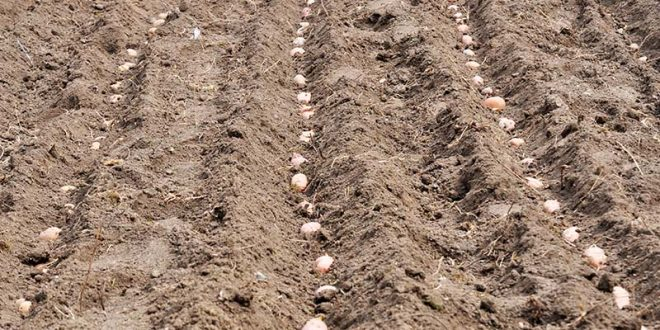This year, according to a recent North Western European Potato Growers (NEPG) press release, EU-04’s potato harvest will be much more dependent on the production per hectare than the sown areas.
In the present days, the NEPG’s countries (EU-04 – Belgium, The Netherlands, France and Germany) are facing a 4,7% contraction in potato sown areas from 522,300 to 497,700 ha (-24,600 ha), added the organization’s experts.
“There was a decrease in all countries, but especially in Belgium and the Netherlands, which experienced the strongest increases in area in recent years, and which are also the only ones to have an area lower than the 5-year average! This is a historic event, because the area has generally increased year after year over the past two decades”, as reported by the press release.
List of Unknowns is Still Considerable
Whether it’s “new” or “ware” potatoes, the list of unknowns is still considerable, also wrote the NEPG experts in their document. As for the early ones, the heavy rains of the last few weeks could prevent rapid build-up of dry matter in tubers. This could lead to delays in the delivery of contracts, and give some air to the last old potatoes of the 2020 harvest.
In all countries the potatoes have developed a lot of tops, but the tubers are much smaller than average. “Lots of tops, no tubers” is a remark often heard. Tuberization of conservation varieties appears to be higher than what was the case in last 3 or 4 years.
“A high number of tubers is usually a sign of a good potential harvest, but of course enough water is needed in August and September to fill and make enlarge all the tubers. In the event of a heat wave and / or drought, the varieties of conservation could be affected much faster than in previous years, as the plants did not make a lot of (deep) roots”, as reported by NEPG’s experts.
Higher Production Costs and New Challenges
The production costs for the 2021-2022 growing season are already announced. According to the NEPG’s press release, the potato farmers will face an increase in the costs of sprays against mildew, in energy prices (diesel and electricity), and in fertilizer prices (liquid nitrogen has seen its price double in a few months, for example). Not to be mentioned everything related to construction: insulation materials, concrete, steel and wood have also increased dramatically.
Producers are also very aware of the new challenges to be met: more varieties are needed, durable and more robust, whether they are more resistant to late blight or more drought tolerant and heat. There is also a need for varieties that require less fertilizer and are more efficient.








